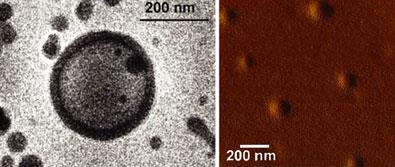Polymer containing protein channels could clean waste water and deliver drugs
Scientists in the US have combined naturally-occurring channel proteins with a new polymer to create a membrane that could be used to deliver drugs or purify water. The new material is more efficient than many commercial alternatives and is likely to be cheaper to use.
The University of Illinois scientists added water channel proteins called aquaporins (AQPs) to their polymer mixture. The proteins, normally found in cell membranes, allow water to pass through them but not ions or other soluble impurities.

By changing the amount of AQP in the membrane, the scientists were able to control its permeability - this gives a tuneable time-release mechanism essential for any drug delivery application. ’Having control over the permeability of the membrane, as we have demonstrated, will enhance drug delivery research,’ Mark Clark, professor of civil and environmental engineering and co-author of the paper, told Chemistry World.
However, the membrane currently self-assembles into hollow spheres. If it is to be used for water treatment and desalination, the researchers must modify the material so that it forms a larger, flat membrane. But it already shows promise - the membrane requires considerably less pressure to drive water through it than existing reverse osmosis membranes.
Graeme Pearce, principal consultant for Membrane Consultancy Associates, says real advances in desalination technology would be a boon in places where transporting clean water is too expensive. ’Desalination is a growing field, but it will always be a bit limited - you’re battling against thermodynamics,’ he told Chemistry World. ’Any advances like this which might lower the cost of the process will be welcome in certain areas of the world where desalination will be important.’
Jonathan Edwards
References
et al,PNAS, 2007, DOI: 10.1073/pnas.0708762104






No comments yet